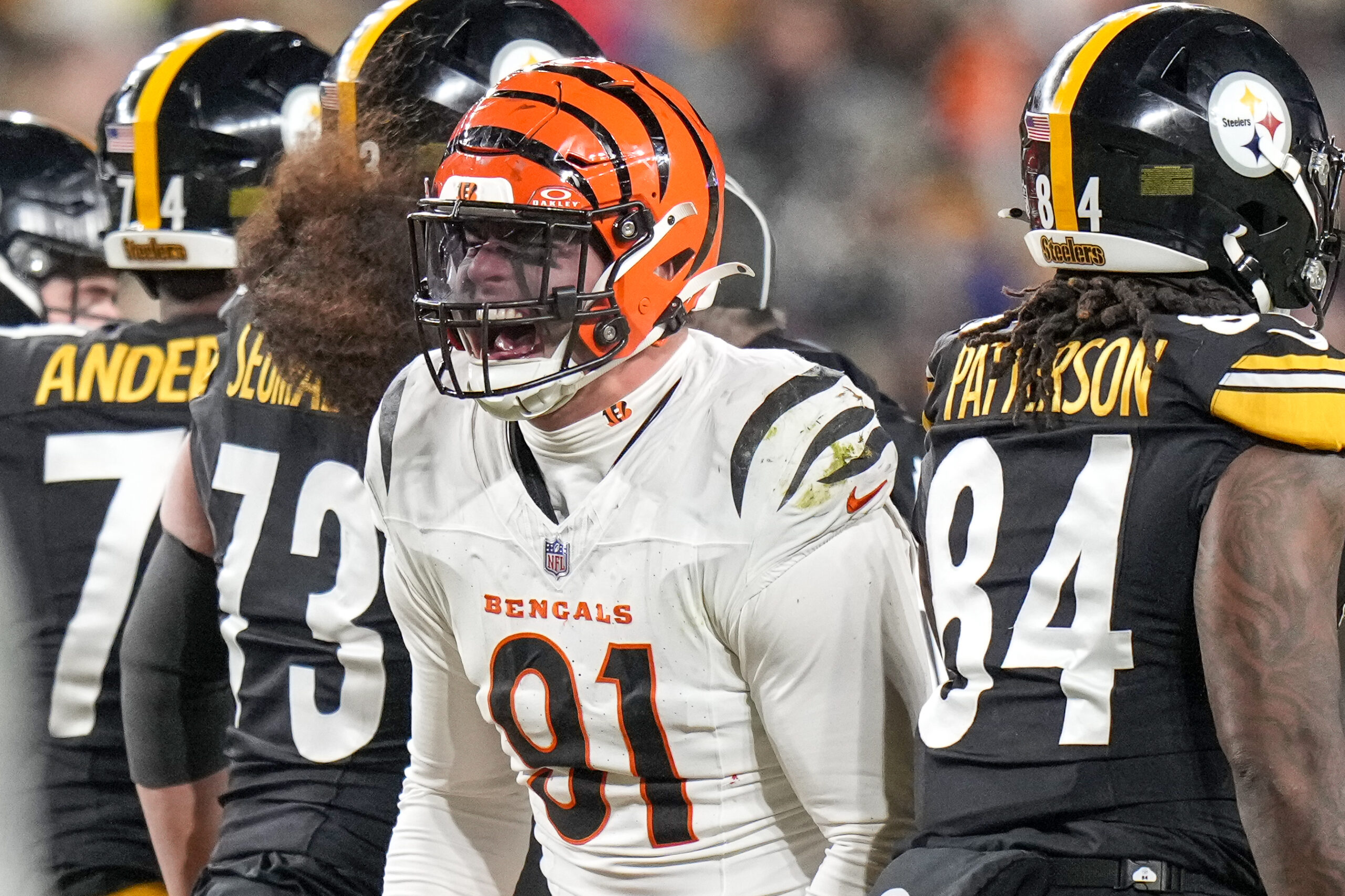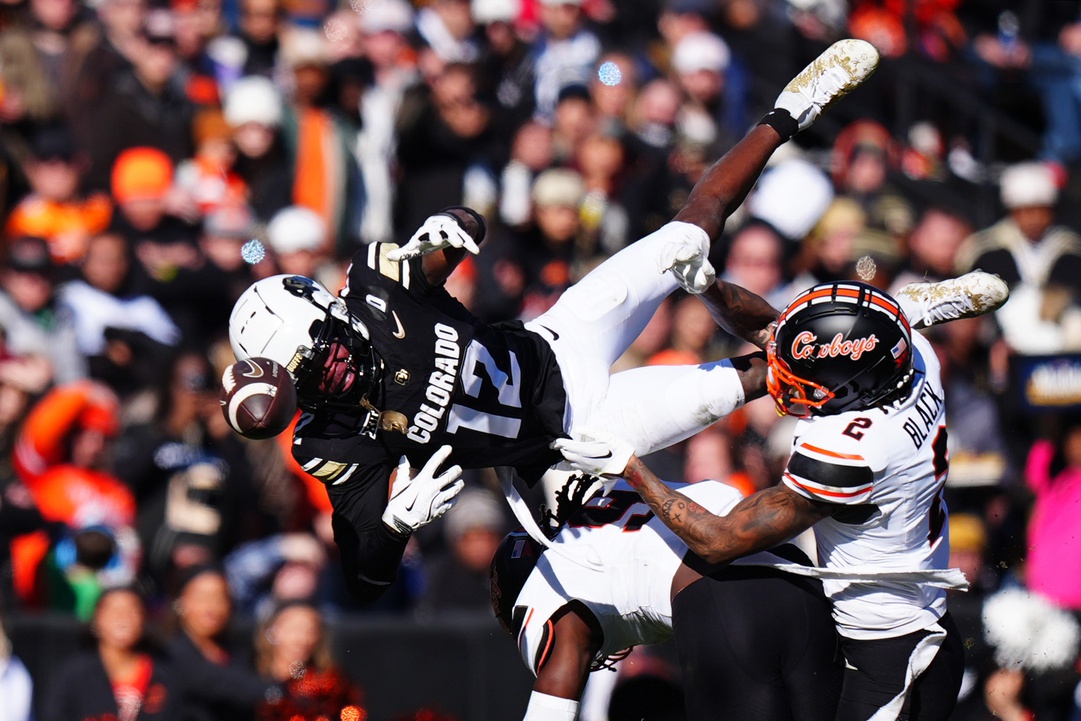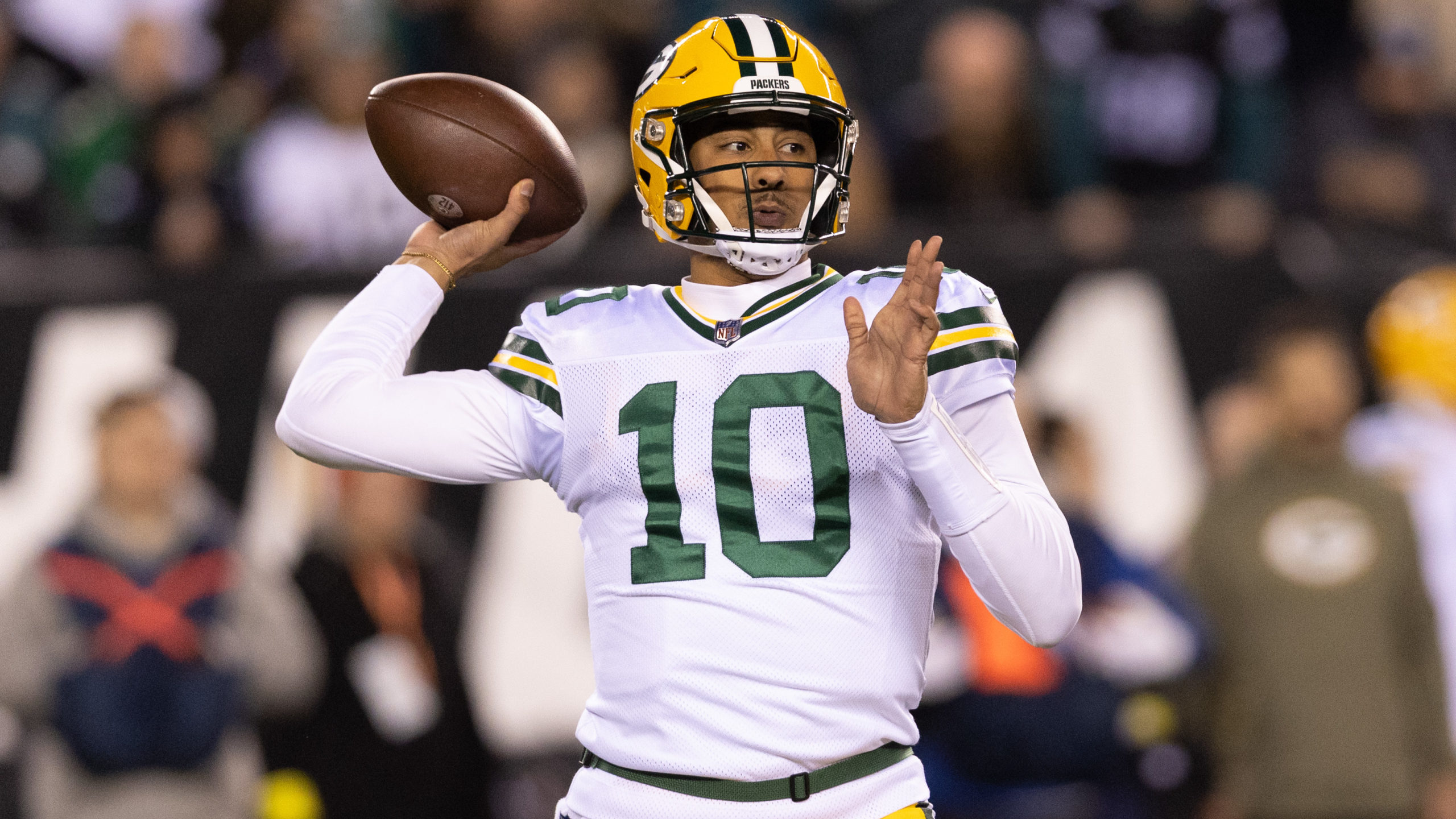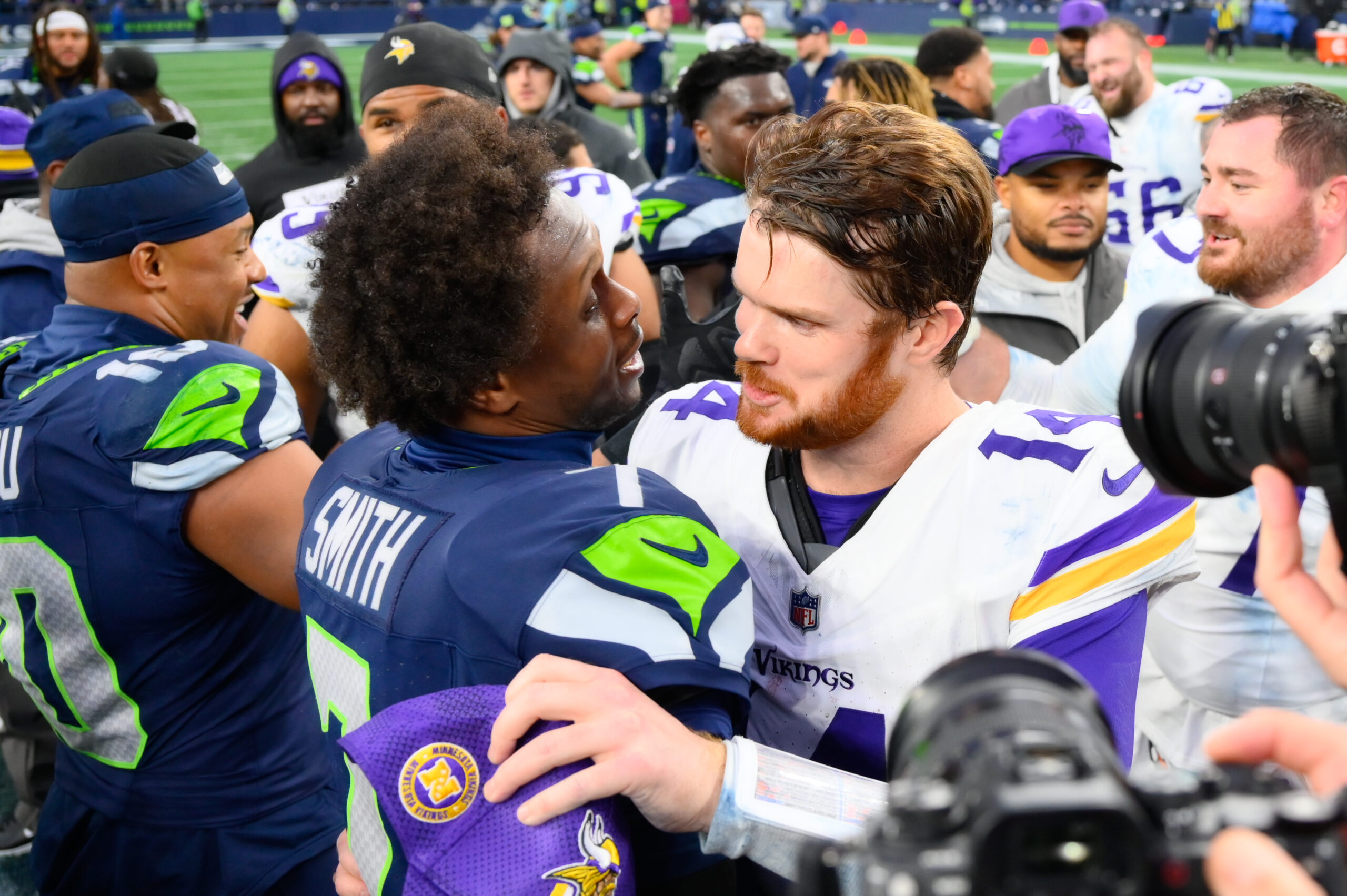NFL Analysis
1/13/25
21 min read
1st & 10: How 2025 NFL Wild Card Weekend Games Were Won

The playoff games weren't as close as we thought they could be, but we got plenty of exciting action this weekend.
Each week, 1st & 10 will bring you a Monday morning in-depth breakdown of everything you need to know from Sunday’s slate of games. We’ll fill this column with stats, film, and plenty of words to keep you covered on anything you might have missed or want to dive deeper into from Sunday.
All stats provided by TruMedia unless noted otherwise
1st & 10 NFL Wild Card Weekend
1. Jayden Daniels Comes Up Big
It shouldn’t be a surprise that Jayden Daniels was unfazed in his first playoff game, a 23-20 win against the Buccaneers. Daniels averaged 0.18 EPA per play, the ninth-highest mark for a rookie in a playoff game since 2000.
Daniels didn’t have a huge moment in this game — the deep throw to Terry McLaurin into coverage on a third-and-6 during the opening drive was fun yet typical — but he didn’t have any mistakes that suggested the game was too much for him.
Passing success was necessary because Tampa Bay was able to hold the Washington run game in check. The Commanders had a 29.6 percent rushing success rate and averaged -0.21 EPA per play on the ground.
The Buccaneers blitzed Daniels on 40 percent of his dropbacks. Given the state of Tampa Bay’s secondary and its typical pass rush, the Bucs have been reliant on the blitz for much of the season. But against the blitz, Daniels averaged 0.39 EPA per play with a 56.3 percent success rate. The Buccaneers were only able to pressure Daniels on 37.5 percent of those blitzes, but he did not take a sack.
Pressure did not phase Daniels at all. When under pressure, Daniels averaged 0.56 EPA per play with a 53.3 percent success rate. He completed 7-of-12 passes for 97 yards and two touchdowns and added three scrambles.
That’s the second-best mark in a playoff game in the past five seasons for a quarterback with at least 10 plays under pressure, behind Patrick Mahomes against the Bills in the 2021 Divisional Round (0.67 on 21 plays).
Daniels was able to bounce off and away from defenders throughout the night.
On third and fourth down, Daniels was 9-of-15 for 138 yards and two touchdowns. The Commanders went for five fourth downs in this game and converted three.
Washington’s final conversion resulted in a five-yard touchdown to McLaurin on a fourth-and-2 that gave the Commanders a 20-17 lead.
Dan Quinn has been one of the most aggressive coaches in the league on fourth downs this season, and it has paid off. After the Commanders failed on a fourth down, the Buccaneers fumbled on a miscommunicated snap, giving Washington the ball back inside the red zone. Down by four, the Commanders did not hesitate to go for it again, which resulted in the touchdown.
Only the Eagles added more EPA on fourth down decisions than the Commanders during the regular season, and Quinn was among the league leaders in going for it when recommended.

That advantage in aggressiveness mattered when the Buccaneers decided to kick a field goal to tie the game on a fourth-and-3 from the 14-yard line with 4:41 remaining. The ESPN Analytics model suggested a go.

Tampa Bay kicked and did not touch the ball again as Washington took the ball down the field to kick the game-winning doinked-in field goal as time expired.

2. Ravens ran through the Steelers
When Derrick Henry signed with the Baltimore Ravens, the idea was the best version of the pairing with Lamar Jackson would make life hell for opposing defenses in the backfield. Well, the Steelers were in hell for most of the 28-14 Ravens win.
Without Zay Flowers in the lineup, the Ravens did not try to fit another receiver into the lineup. In fact, they tripled down on not forcing wide receivers to be on the field. Baltimore used 11 personnel on just 11.1 percent of plays against Pittsburgh, the second-lowest rate in a playoff game in the past five seasons — the lowest also came from the Ravens (3 percent) in the 2022 Divisional Round loss to the Bengals. No other team was below 50 percent from 11 personnel this weekend.
Instead, the Ravens used a sixth offensive lineman on 22.2 percent of plays after doing so just 2.2 percent during the regular season. Despite the Ravens going heavy so often (43.1 percent in 12 and 19.4 percent in 21), the Steelers played nicked 45 percent of the time.
Ravens OFFENSE by DBs vs PIT (per TruMedia)
| On-Field DBs | Plays | EPA/Play | OffSuccess% | Pass Rate | Pass Success% | Rush Success% | YPP |
| 3 | 16 | -0.05 | 61.10% | 0.0% | - | 62.5% | 3.8 |
| 4 | 22 | -0.09 | 31.80% | 31.8% | 14.3% | 40.0% | 4.2 |
| 5 | 33 | 0.60 | 55.60% | 54.5% | 64.7% | 60.0% | 9.5 |
Baltimore often used its big bodies to bully Pittsburgh’s defenders, keeping the Steelers from getting the Ravens into situations where they needed to pass.
Throughout the game, and especially early, the Ravens ran straight zone read plays, making the Steelers choose between allowing Henry or Jackson to take the ball. Early on, the Steelers crashed hard on Henry, and Jackson kept the ball.
While he didn’t break many big plays, the runs picked up enough yards to be successful and keep the Ravens in front of the sticks. Jackson only had one run go more than 10 yards but had a 70 percent rushing success rate.
Pittsburgh had no right answer, even when it tried to play the exchanges correctly. Baltimore ran a direct snap with Henry behind center and tight end Isaiah Likely in the backfield. Jackson motioned from left to right, and at the snap, Likely went in that direction also. That pulled a defensive back and two linebackers while Henry kept and went left for a 34-yard gain.
— Dan's Clips (@dansfilmclips) January 13, 2025
On Henry’s 44-yard touchdown run later in the game, the linebackers flowed with Jackson, but Henry went to the left to get around a crashing Alex Highsmith before he cut back to the right for a wide-open running lane.
— Dan's Clips (@dansfilmclips) January 13, 2025
Henry had the most rushing EPA for a back with at least 20 carries in a playoff game since Raheem Mostert’s 220-yard against the Packers in the 2019 NFC Championship Game.
Despite just 1.69 yards before contact per rush — that was his ninth-lowest figure of the season — he was only stuffed on 7.7 percent of his runs. Most contact came with hesitation in figuring out who had the ball, and Henry was able to run through it for an average of 5.46 yards after contact per rush.
Jackson also had little trouble throwing the ball when he needed it, with 0.35 EPA per play and a 51.5 percent success rate. He was pressured on 56 percent of his dropbacks, the second-highest rate of a quarterback in a playoff game in the past five seasons. He only had a 28.6 percent success rate under pressure, but there were so many positive plays elsewhere, especially in the run game, that none of that really mattered.
The Ravens will go to Buffalo to play the Bills next Sunday in the Divisional Round.
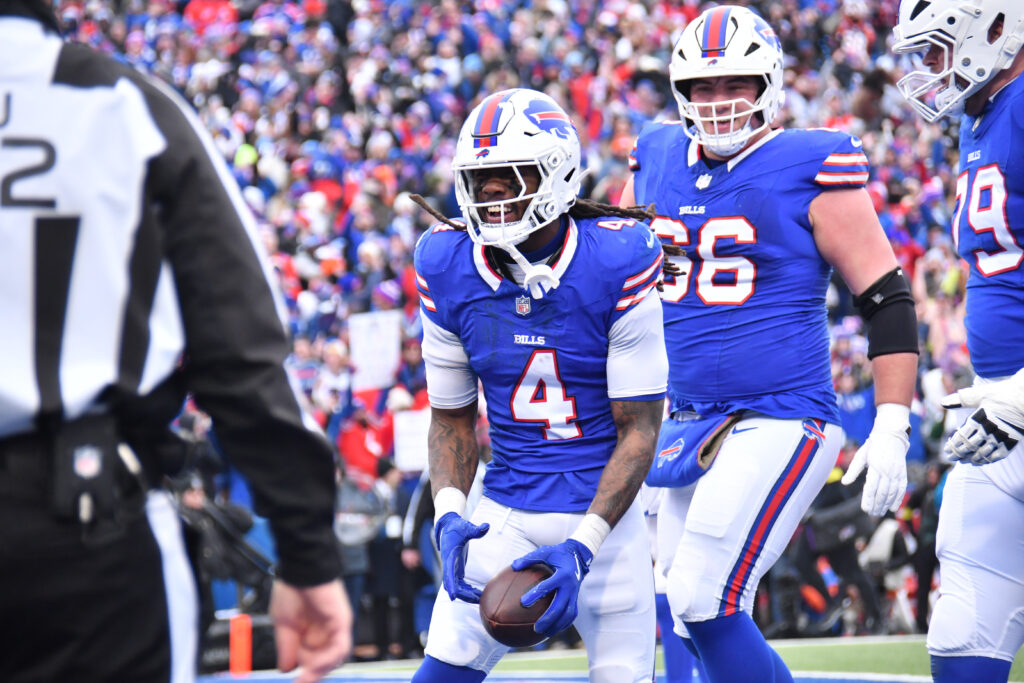
3. Bills Bully Broncos
On the opening drive, the Broncos went 70 yards in five plays and scored on a 43-yard bomb from Bo Nix to Troy Franklin. That was the last time it felt like the Broncos controlled this game, which ended 38-7.
In our preview of this game, we asked how much the Buffalo Bills would rely on the passing game because the Broncos were the league’s best run defense (as well as the top passing defense). Buffalo leaned heavily into the run and found success with James Cook and Josh Allen on the ground.
Cook had 120 yards and three touchdowns on 23 carries while Allen had 46 yards on eight carries with a 100 percent success rate. Buffalo’s 53.8 percent success rate was the highest against Denver in a game this season.

The Bills ran on 60 percent of their early downs, and the focus was on keeping the Broncos’ edges slowed down and occupied in the run game. Buffalo used the highest rate of six offensive linemen during the regular season at 14.4 percent, nearly double the next-highest team at 7.9 percent. Against the Broncos, the Bills used six offensive linemen on 22.2 percent of their snaps.
Buffalo only averaged 3.8 yards per play with a sixth offensive lineman on the field but averaged 0.06 EPA per rush with a 46.2 percent rushing success rate. The Bills were also changing up how that sixth offensive lineman was used, including shifting that extra lineman outside of an inline tight end to guarantee the edge would be set against Denver’s undersized players outside.
— Dan's Clips (@dansfilmclips) January 13, 2025
With control on the ground, the Bills didn’t have to rely on Allen, but he was great when they did. Allen averaged 0.55 EPA per play with a 61.1 percent success rate. The Broncos had a near-even split between zone and man coverage, and Allen picked apart the man coverage, especially when the Broncos sent a blitz later in the game. Allen finished with 0.89 EPA per play against man coverage in this game.
The Bills had a perfect mix of scheme and playmaking that created big plays in the passing game. On a fourth-and-1 late in the third quarter, Allen scrambled around and then found running back Ty Johnson in the back of the end zone.
Johnson looped all the way around to come back into the middle of the end zone on that play.

Then, on a third-and-6 to start the fourth quarter, the Bills came out in a 4x1 look and used a quick-return motion from Mack Hollins to mess with Denver’s coverage responsibilities just before the snap.
That got Curtis Samuel wide-open for a touchdown.
Buffalo held the ball for 41:43 in this game. Early on, that kept the game close because the Bills didn’t have many drives, but throughout the game, Buffalo was in full control of what it wanted to do.
That’s a luxury the Bills haven’t had in previous versions of this roster. This would have been a 60-dropback game for Allen two years ago with no chance of having success against the best run defense in the league.
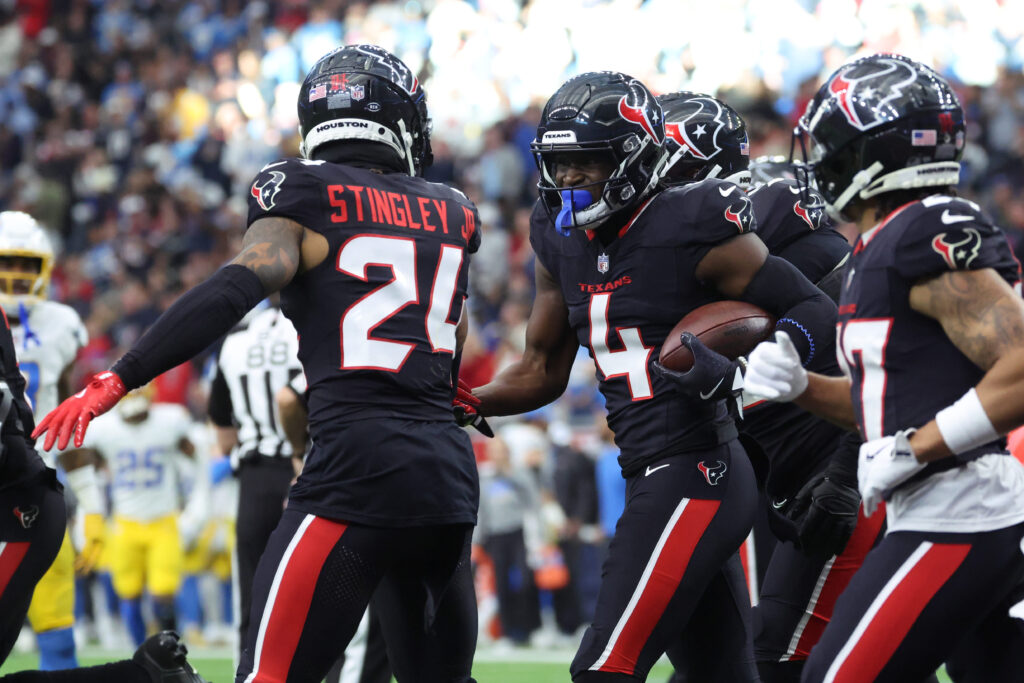
4. Texans Defense Comes Through
Among 547 qualified quarterback playoff games since 2000, Justin Herbert’s game against the Houston Texans ranked 539th by EPA per play (-0.59). The Texans bothered Herbert all game long and forced so many mistakes, never allowing the Los Angeles offense to get into a rhythm.
Herbert was pressured on 52.8 percent of his dropbacks, the fifth-highest rate in a playoff game in the past five seasons. It wasn’t just pressure. The Texans were able to get quick pressure on stunts and games that never gave the quarterback a chance to react.
According to Next Gen Stats, Herbert faced 11 quick pressures (under 2.5 seconds), including five unblocked pressures. He only went 3-of-15 while under pressure for -0.82 EPA per play.
The Texans were able to fold the interior of the offensive line to collapse the pocket and kept the edges contained to prevent Herbert from breaking through and running.
For the first time in a game this season, Herbert had no rushing attempts. That was one of the keys to the game, given how free Herbert had played during the season when he was willing to scramble. Plus, Houston struggled to stop scrambles, as it ranked 30th in EPA per play against scrambles.
Instead, Herbert was forced to throw into tight windows, doing so on 28.1 percent of his passes, his second-highest rate of the season.
Houston’s secondary, specifically corners Derek Stingley and Kamari Lassiter, played terrific in this game. Lassiter played press on 13 of his 36 coverage snaps, per Next Gen Stats, and did not allow a catch with an interception while doing so.
— Dan's Clips (@dansfilmclips) January 13, 2025
Stingley was targeted 11 times as the nearest defender but forced a tight window on nine of those plays (45.5 percent) and came down with two interceptions, including a pick-six.
Houston’s defense has been what has gotten the Texans to this spot. The defense ranked fifth in EPA per play during the regular season, while the offense was 25th.
Early in the game, it looked like the Chargers were going to take control and run away with the game, but they only managed to get a 6-0 lead.
With 6:15 left to play in the second quarter, the Texans took over a drive at their own 1-yard line. C.J. Stroud got away with what could have been called an intentional grounding penalty in the end zone on first down. Then, on a third-and-16 from the 17-yard line, Stroud fumbled the snap but recovered and found Xavier Hitchinson for a 34-yard gain that brought the game to the two-minute warning.
Houston finished the drive with a touchdown on a 13-yard pass to Nico Collins and then forced a three-and-out from the Chargers that took just 31 seconds off the clock. The Texans were able to drive for a field goal before the half and go into halftime with a 10-6 lead.
That drive turned things around for Stroud on offense. He settled down after some bad misses in the first half and had better results while not trying to hit a home run on every play — instead, he took advantage of the Chargers’ linebackers in the middle of the field.
C.J. Stroud By Half vs LAC (per TruMedia)
| Half | EPA/Play | Success% | aDOT | YPA | Comp% | Pressure% | Between Numbers% | YAC% |
| First | -0.12 | 38.5% | 10.9 | 7.8 | 60.9% | 34.6% | 52.2% | 32.8% |
| Second | 0.06 | 56.3% | 6.6 | 10.2 | 80.0% | 53.8% | 70.0% | 59.8% |
Houston will travel to Kansas City for a rematch of a 27-19 Chiefs win from Week 16.
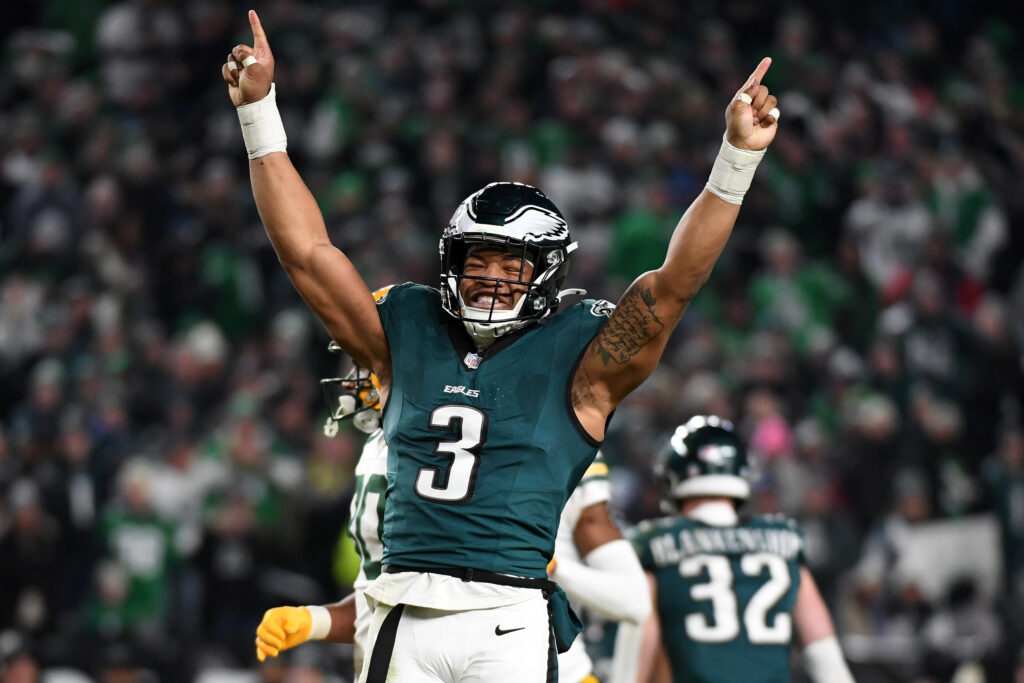
5. The Eagles Shut The Packers Down
The Philadelphia Eagles' offensive performance in the 22-10 win against the Packers was not great, but the Philadelphia defense’s play did not require much offensive output.
When the Packers fumbled the opening kickoff, and the call was upheld, leading to an easy touchdown to Jahan Dotson to start the game, it was clear the Packers might be in trouble. The following Green Bay offensive drives went punt, punt, interception, missed field goal, and interception. That was it for the first half.
Green Bay never looked settled on offense, and injuries piled up along the offensive line and at receiver, leaving the passing game in a sad state. The Packers continually tried to run the ball, but it just didn’t work. Josh Jacobs had a 27.8 percent rushing success rate despite only getting stuffed on one of his carries. There was no room to run, and Jacobs averaged 0.39 yards before contact per rush.
Still, the Packers ran on 54 percent of their first downs, often creating second-and-longs.
Putting the Packers behind the sticks allowed the Eagles' defense to tee off on Jordan Love. Love was only blitzed once but was under pressure on a third of his dropbacks and sacked twice.
The actual act of creating pressure didn’t really matter because Love struggled regardless and had lower EPA per play when not pressured.

Everything Love did looked rushed, even when there was no reason to be.
Philadelphia sat in zone coverage (81.1 percent) and forced Love to find openings that didn’t exist. Love only threw into tight windows on 15.2 percent of his attempts, according to Next Gen Stats, but no throws he made were able to break through.
Love threw within 10 yards of the line of scrimmage on 78.8 percent of his passes, his second-highest rate of the season. His highest (83.3 percent) came in an easy 30-17 win against the Dolphins in Week 13. This was the first time this season Love was forced to keep things short to that extent.
Philadelphia’s offense struggled for much of the game, but this is a unit that is too talented not to eventually break through when given a chance. That came when on a Dallas Goedert touchdown late in the third quarter.
That felt like the difference in the game. The Packers had to strain to scratch at positive plays, while the Eagles just survived until they came.
Jalen Hurts only had a 37.9 percent success rate in his first game back from concussion protocol. It’s something to monitor, but it could clear up with another healthy week under his belt.
Philadelphia will host the Vikings or the Rams next Sunday.
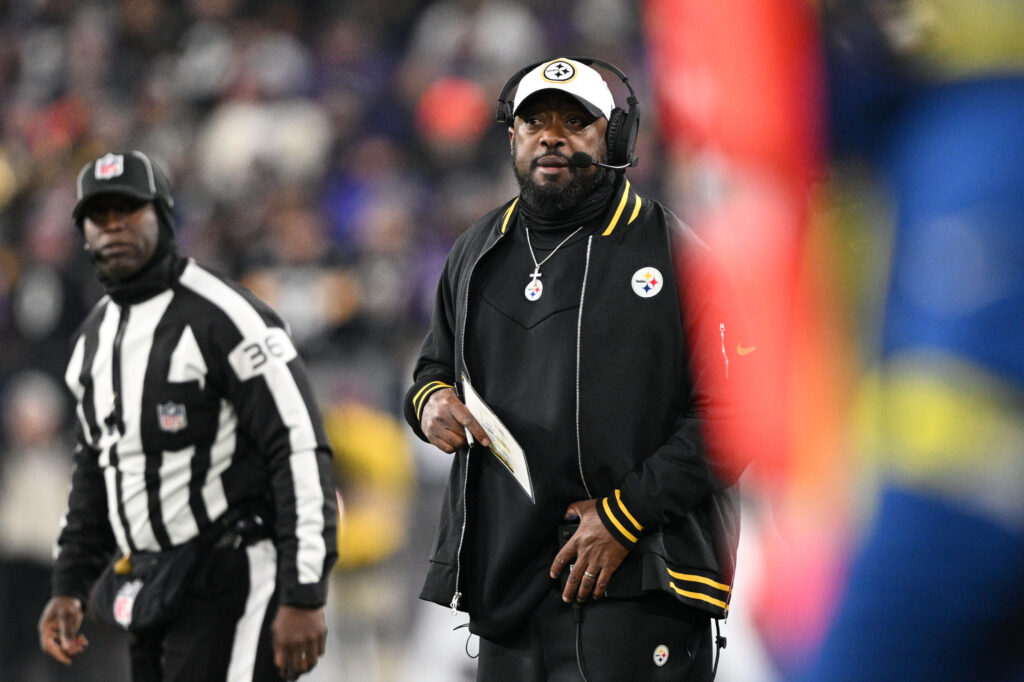
6. Can the Steelers Leave the middle?
The Pittsburgh Steelers overperformed by most metrics and expectations during the 2024 season, but their loss — in a similar fashion to the past few early playoff losses — left a sour taste.
Russell Wilson finishing the game against Baltimore with 9.3 yards per attempt but a 38.9 percent success rate sums up what the offense was like for much of the 2024 season after he took over. It also highlights the trap the Steelers have been stuck in lately — they’re good enough to make the playoffs but not bad (or aggressive) enough to acquire a game-changing quarterback talent.
What’s the next move for the Steelers? Is their best option to find their version of a Baker Mayfield or Sam Darnold? Maybe. But does Pittsburgh have the offensive structure in place to get the most out of that hypothetical quarterback? Think about the offenses designed by Kevin O’Connell and Liam Coen this season. The Steelers aren’t coming close to that.
Pittsburgh is going to have to be more forward-thinking with how it acquires a quarterback or how it situates one, or things will continue to look the same.
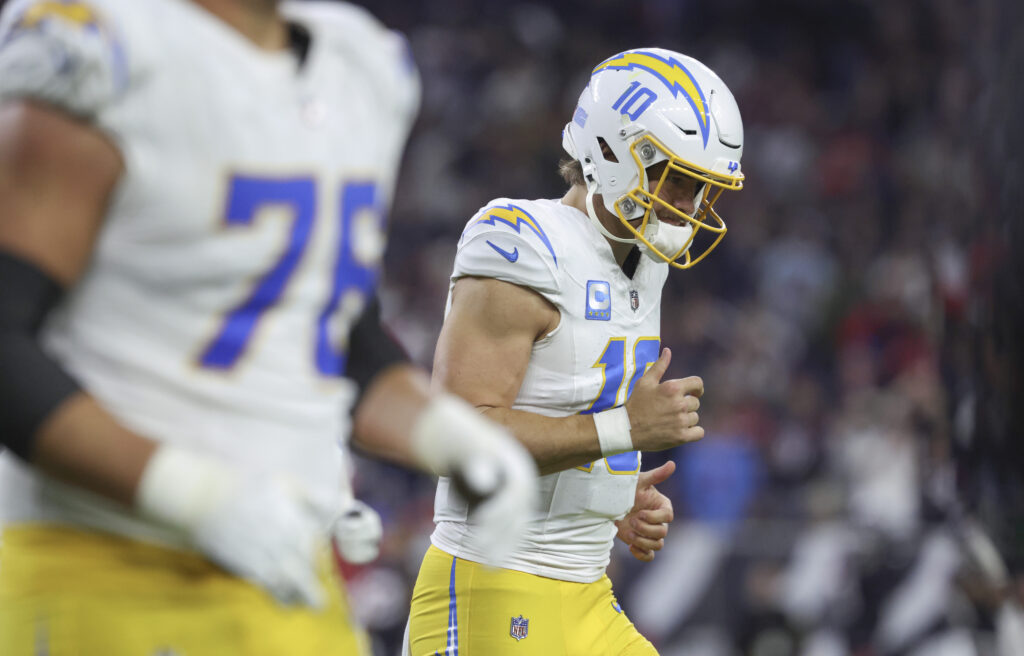
7. What’s next for the Chargers
Like the Steelers, the Los Angeles Chargers objectively overshot all expectations in the first year under Jim Harbaugh. But playing that game while being a road favorite makes the result feel like just another Chargers season.
This game did show that Herbert's environment should be closely examined. He’s a talented quarterback, but there’s only so much he can do on his own. That’s why he spent most of the season near the middle of the pack in EPA per play. It’s also why when things started to go wrong for him against Houston, there was never really a chance to get them back on track.
Ladd McConkey might be a star in the making, but there needs to be some reliable threat on the outside. The interior offensive line made things difficult to pass and run for a team that wanted to run the ball early. These are the kinds of areas we see teams build up to support a quarterback. How the Chargers choose to do so will shape how successful the Harbaugh era can be.
The Chargers have $55 million in effective cap space, according to Over The Cap, which is the sixth-highest in the league. The chance to make a difference in Year 2 will be there.
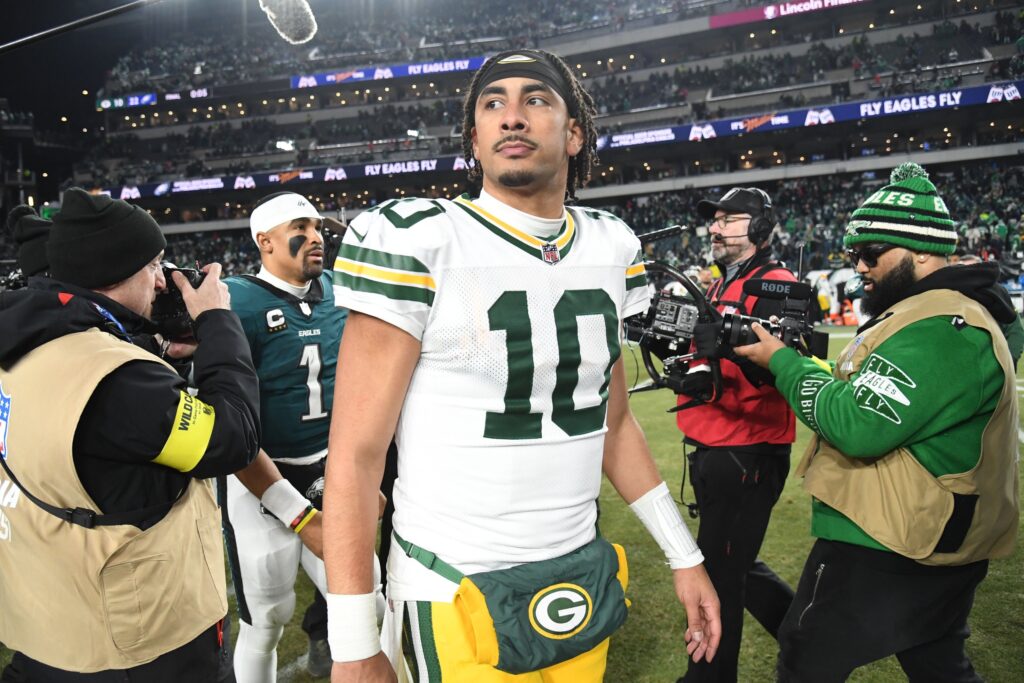
8. Will Packers build on league’s youngest roster?
After the end of the 2023 season and the hype entering this year, it’s easy to overlook that the Green Bay Packers were still the youngest team in the league by snap-weighted age in 2024.
The question for the Packers will be how aggressive they want to be in adding to the youthful foundation. Some of the draft and development plans didn’t pan out this season. The wide receiver group has a ton of fun skill sets, but there wasn’t a true emergence, and both Christian Watson and Dontavion Wicks fell below expectations.
At full health, the offensive line is good, but the depth proved to be a problem.
The pass rush doesn’t have a player who can take over. Green Bay was 13th in pressure rate during the regular season but only had one player (Devontae Wyatt) produce an early-down pressure rate above 10 percent. Rashan Gary led the team with 15 quarterback hits.
Making everything a success by committee is difficult when the committee doesn’t always show up.
The time to add is now. The Packers have $38 million in effective cap space, and the only big contract on the books belongs to Jordan Love, and even that’s manageable. He only has a $29.6 million cap hit scheduled for 2025, which is just projected to be 10.3 percent of the cap.
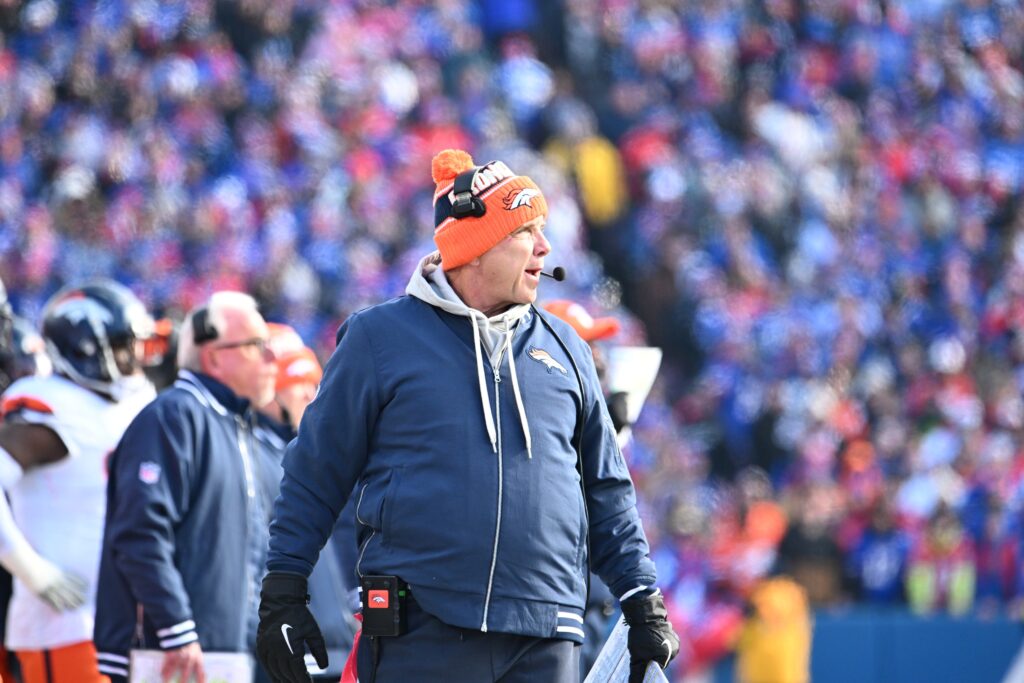
9. What Do The Broncos Need?
If there was a team playing with house money this weekend, it was the Denver Broncos. Sean Payton got his groove back after the forced marriage with Russell Wilson in 2023. Bo Nix is better than expected. The defense was the best in the league, and most of those pieces will be on the roster in 2025.
So, where do the Broncos go next? It should be fascinating to see what Payton believes is needed to boost the offense. Cortland Sutton is signed for another season and has been incredible as Denver’s lead receiver. Marvin Mims could continue to develop into a player who warrants a more traditional receiver role to add to his big-play ability.
Could Payton want a dynamic tight end after all the years with Jimmy Graham? Or maybe a running back after Denver was a middle-of-the-pack rushing team despite a great offensive line? Thinking about Tyler Warren or Ashton Jeanty could be fun.
Those might not be the exact answers, but the Broncos should have more juice added this offseason, and that should make this offense even more interesting going forward.
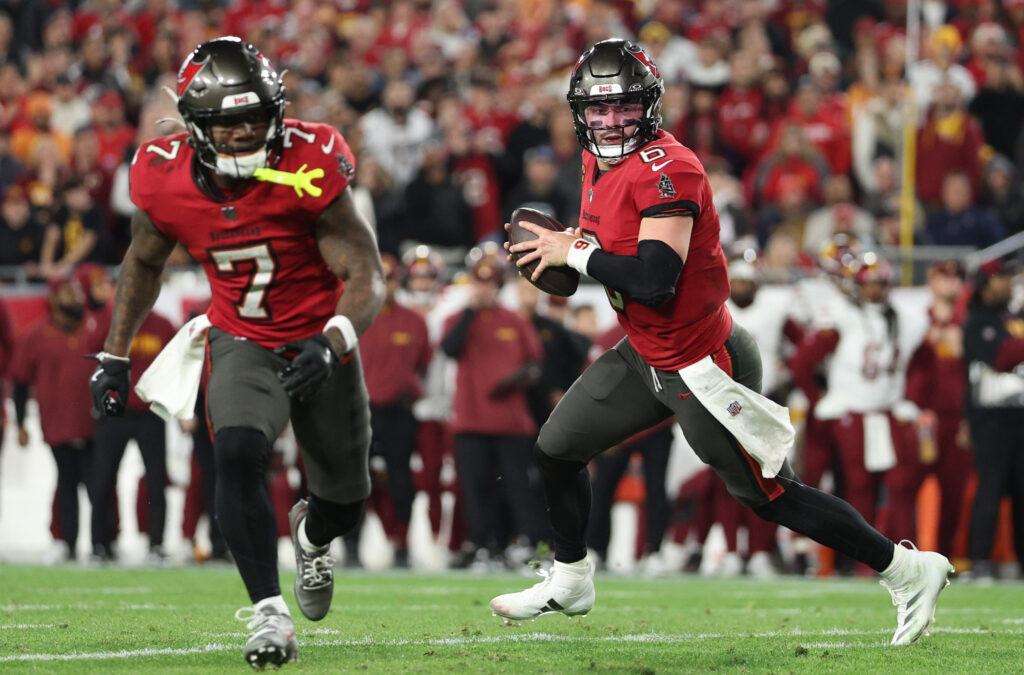
10. Is Baker Going To Need Another New OC?
Buried in the loss to Washington was how good Baker Mayfield played. He averaged 0.46 EPA per play with a 53.8 percent success rate. That was the 11th-best playoff game by EPA per play in the past five seasons.
The playoff success extends to how well Mayfield played during the regular season when he ranked sixth in EPA per play. He had another level of development unlocked under offensive coordinator Liam Coen, and because of that, Coen will be a popular head coaching candidate.
That comes after Dave Canales was hired by the Carolina Panthers following just one season as Mayfield’s offensive coordinator in Tampa Bay.
Coen unlocked a calmness in Mayfield that kept him strong in the pocket — though “calm” is not the word to use when Mayfield decides to run. But Mayfield would get himself into trouble when he floated from the pocket or tried to do too much. Coen’s offense built in a structure that really settled that down.
Losing Coen would be tough for the Buccaneers, who would then need to find another offensive coordinator, the third in three years, to get the most out of the quarterback.


